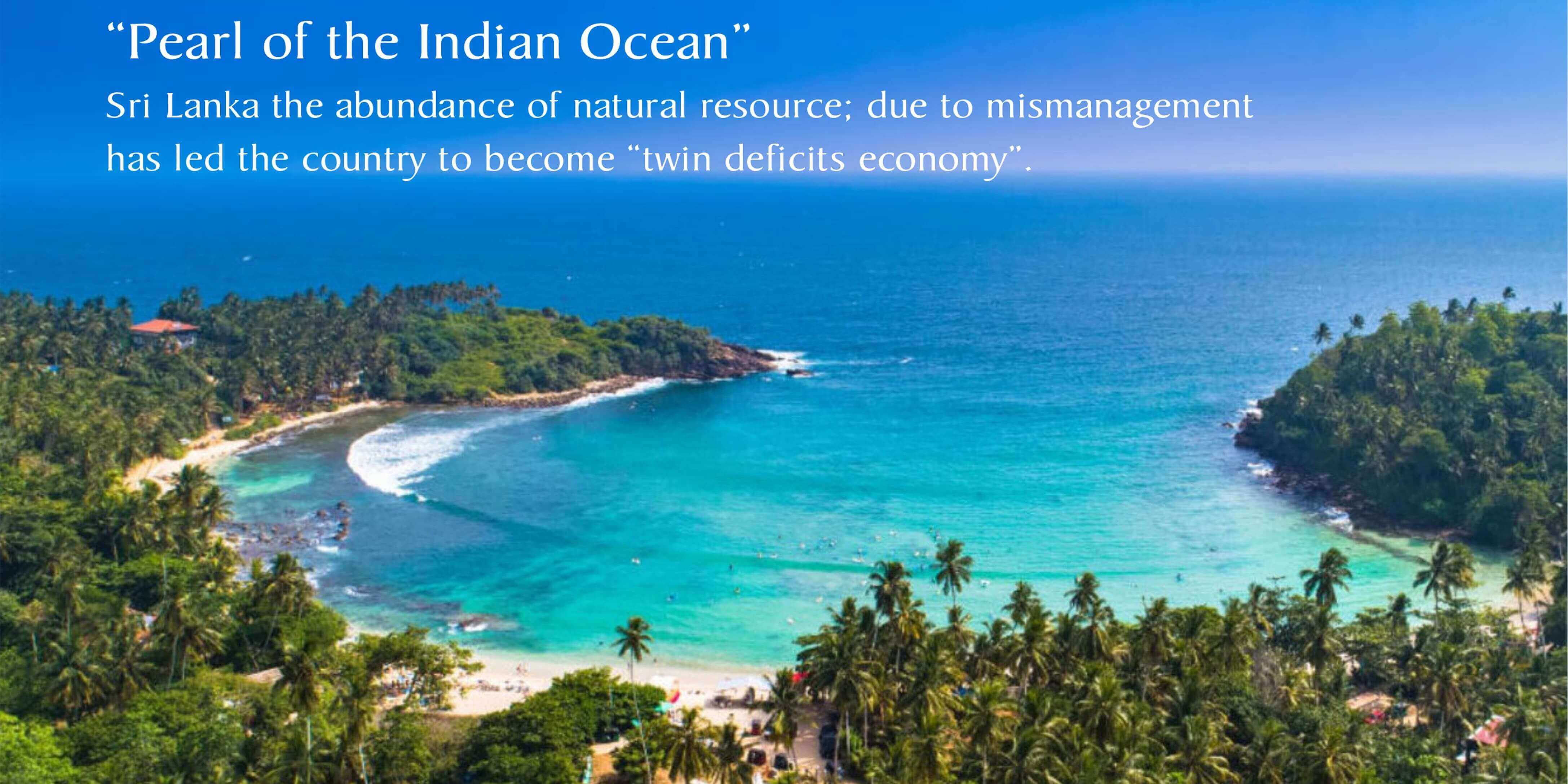
Sri Lanka Financial Crisis
Sri Lanka is known as the "Pearl of the Indian Ocean" because of the abundance of its natural resources such as precious gemstones, mineral sands, graphite, limestone and phosphates along with its vast biodiversity and scenic beauty.
Sri Lanka had been ravaged by a violent civil war for over three decades which led to a devastation of its economy. After the end of the civil war in 2009, the Sri Lankan government put in very effective measures to revamp the economy. As a result, the economy of the nation grew at an average rate of approximately 5.8% during the years 2010 to 2018. The 2011 Global Competitiveness Report, published by the World Economic Forum, described Sri Lanka's economy as transitioning from the factor-driven stage to the efficiency-driven stage and that it ranked 52nd in global competitiveness. In 2016, World Bank had declared that only 4.1% of the Sri Lankan population was below the poverty line.
Despite such a rich history and having bounced back so strongly after the civil war, today Sri Lanka is facing the worst economic crisis in history. What could have led to the downfall of what was considered a strong economy? Read on to find the answers.
It began with the governments trying to focus on developing infrastructure. This led to near bankruptcy that needed bail out by IMF in 2016. The nation needed another bail out from China in 2018. This led to a spike in the foreign debt repayment, which is done using foreign currency. Tourism was one of the major sources of foreign currency input. This reduced substantially after the Easter Sunday bombings in 2019 and with the onset of COVID pandemic, tourism industry came to a standstill majorly affecting the revenue of the country. This led to a major deficit in the inflow of foreign currency while the outflow (used for repayment of loans and imports of essentials such as fuel and medicines) kept rising. Certain government policies meant to boost the economy went wrong, adding more pressure on an already weak economy.
Firstly, in December 2019 the Value Added Tax (VAT) rates were slashed from 15% to 8%, corporate tax rates were reduced by 4% and indirect taxes such as nation building tax, pay-as-you-earn tax and economic service charges were abolished causing a loss of 2% of GDP.
Secondly, in June 2021, the government took a landmark decision of imposing a "100% organic farming" programme in the hopes of seeing an increase in the export of farm produce and an increase in inflow of foreign currency. A nationwide ban was imposed on inorganic fertilisers and pesticides. The government overlooked the advice from the scientific and farming communities who had warned of a definite collapse of the farming system. This is because organic farming is 10 x more expensive while yielding only 50% of produce when compared with chemical. The plan of becoming the first organic farming nation in the world was abandoned by December 2021 and the ban on chemical fertilisers and pesticides lifted, but the damage had already been done. As a result of the ban, paddy harvest of 2022 is predicted to go down by 50% (note, rice was one of the major exports). The prices of vegetables have risen significantly.
Thirdly, laying the foundation of the Hambantota port has cost Sri Lanka heavily making China the top foreign investor in Sri Lanka and holding the largest amount of Sri Lankan debt (around 10.8%). While China may be perceived to be benevolent, the Chinese investments in Sri Lanka are largely driven by its strategic interests (access to the Indian Ocean and proximity to India).
Lastly, the government expenditure on unproductive projects such as Mattala Rajapaksa International Airport (world's emptiest international airport) and the Lotus Tower to name a few has added to the deficit.
Thus, the economic mismanagement by successive governments has led to Sri Lanka becoming a country of "twin deficits economy", a phrase coined by the Asian Development Bank in 2019. The twin deficits include national expenditure exceeding national income and inadequate production of tradable goods and services.
Considering the dire financial situation back home, you may wish to send money to family and friends back home in Sri Lanka. Now is the time to send money to Sri Lanka as you will get a higher exchange rate than previously. You will also be helping your country to bounce back from the current crisis by adding to the foreign currency inflow when you send money home. Teeparam offers you hassle-free online transfers from the comfort of your home. Register here to have a delightful Teeparam experience! Follow us on Facebook, and Twitter to learn about latest offers and updates.